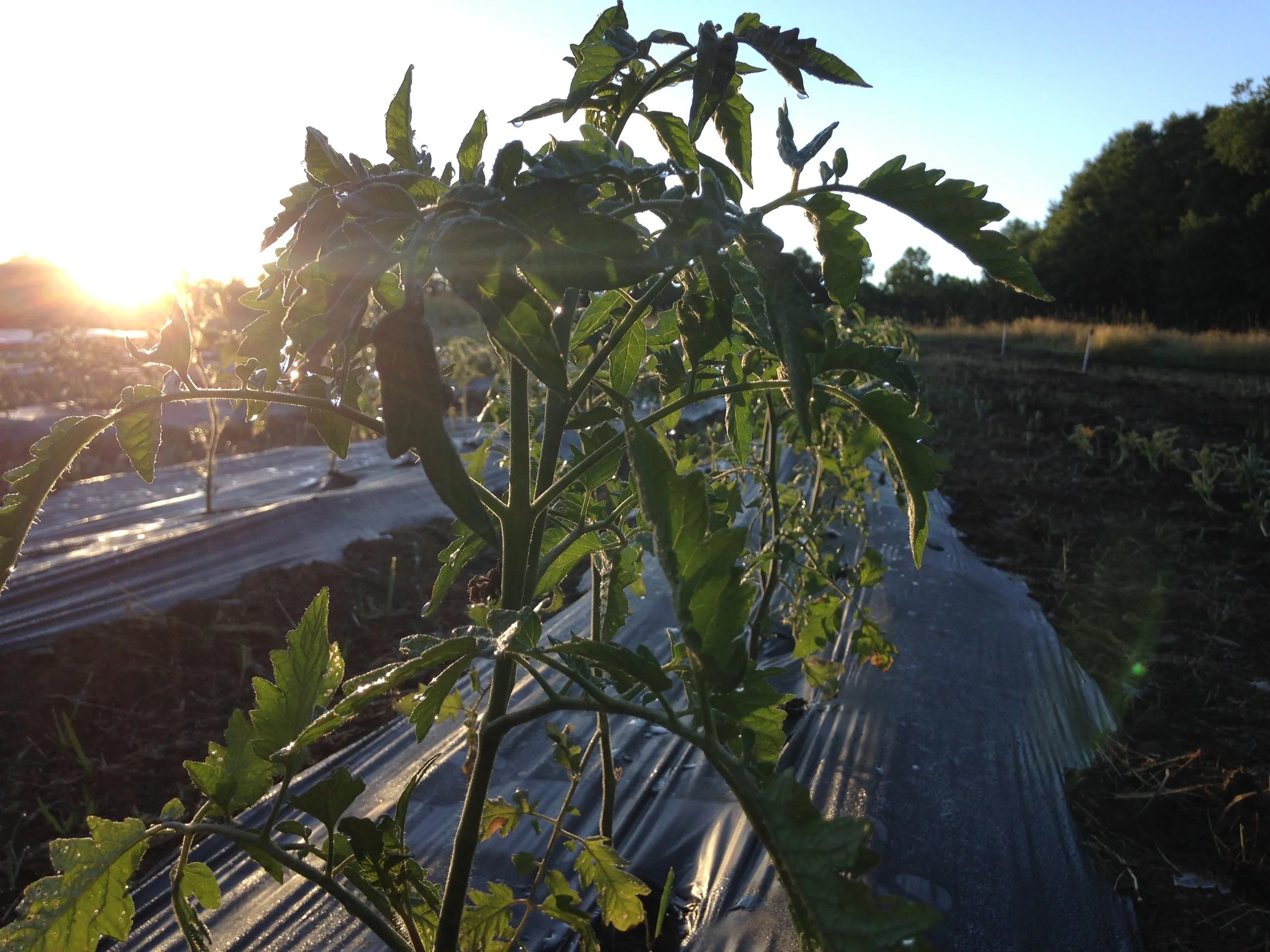This is the farm’s cilantro patch. The coriander plant thrives in cooler weather.
We’re starting the CSA in the second week of June, and this cilantro will probably be ready to cut then. We’ll clear-cut the mature stems, leaving short stubble that will produce a new batch.
Cilantro is the herb name for the plant’s leaves. The plant itself is coriander, and its seeds are the spice of the same name. The entire plant is edible, including the roots. Cilantro leaves and stems are best fresh, since the flavor all but vanishes when dried.
Jason starts cilantro from seed in the basement, under grow lights, and we transplant the little clumps in very early spring. Cilantro thrives in cold weather, while heat makes it prone to bolt, or go to seed.
Some cooking websites say cilantro doesn’t store well. This definitely is not the case with fresh-cut stems. We cut cilantro when it’s cool, in early morning, before the plant absorbs field heat. If you put the cool stems and leaves (unwashed) in a baggie or container with a good seal, they’ll last for plenty long. Just wash before use, and chop the leaves and stems together.
While cilantro calls to mind salsa and guacamole, it adds another layer to many dishes, like a bowl of pho. However, not everyone is a fan. Some people appear to have a genetic aversion to the herb, and it smells like soap to them.
Coriander seems to have been grown by the Greeks since at least the second millennium BC. The plant journeyed to the Americas in the 1600s.
~ Stella

